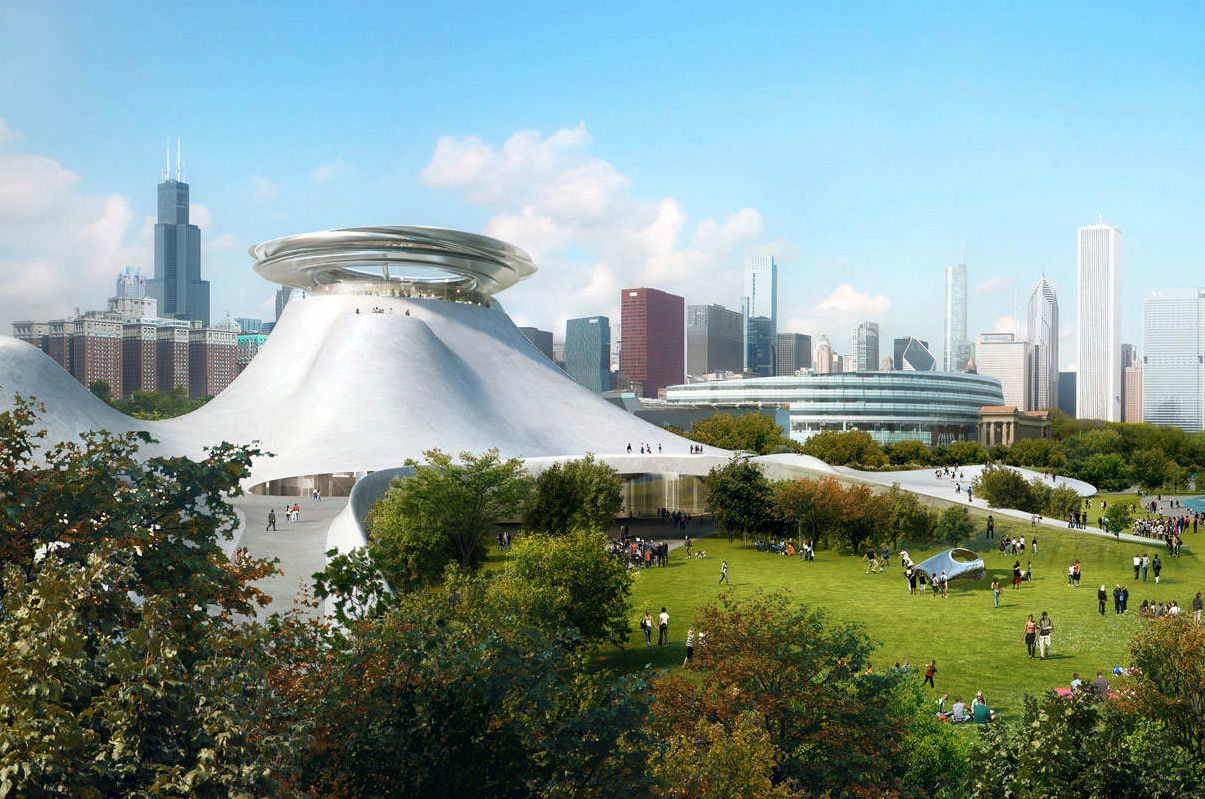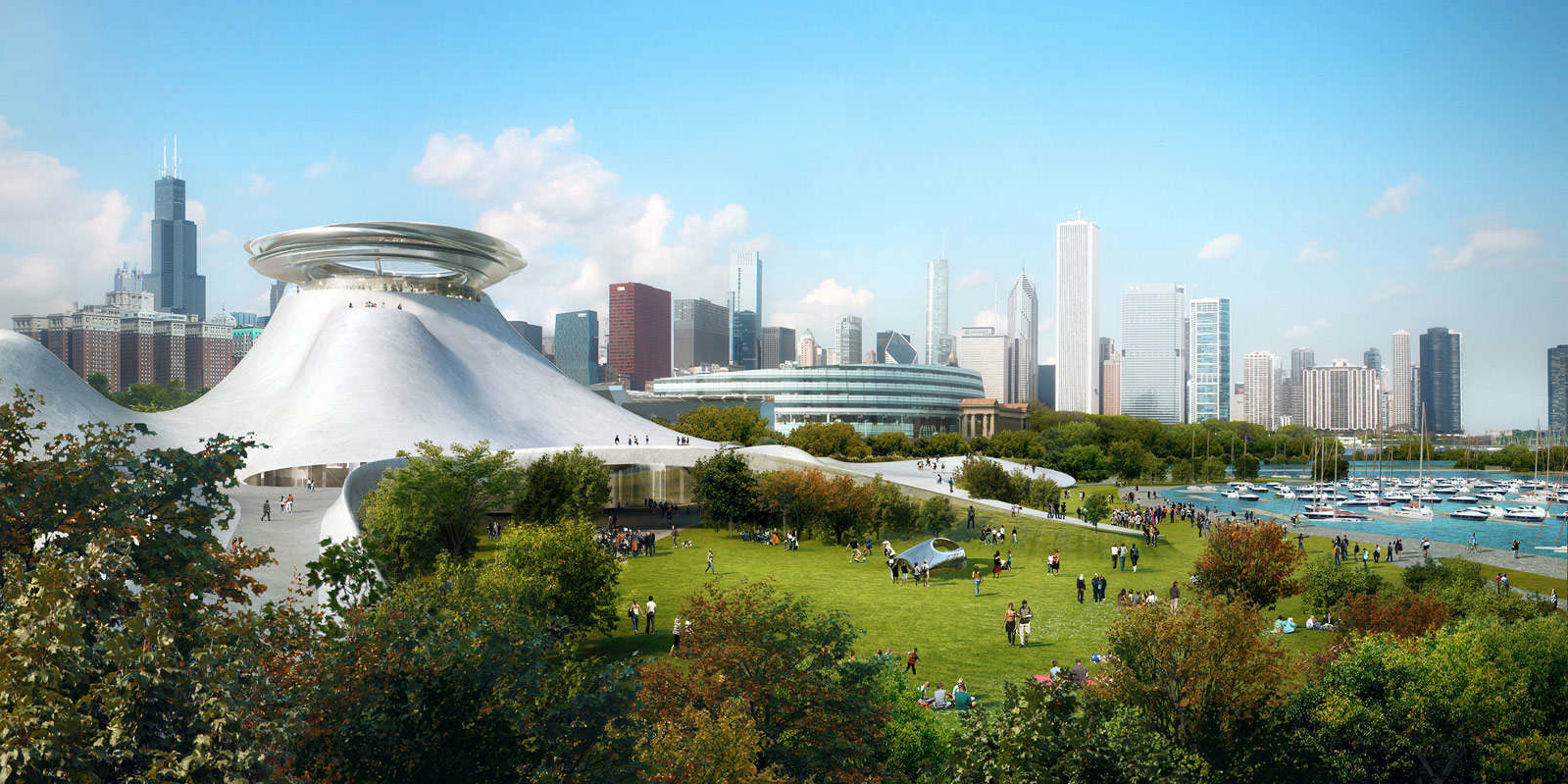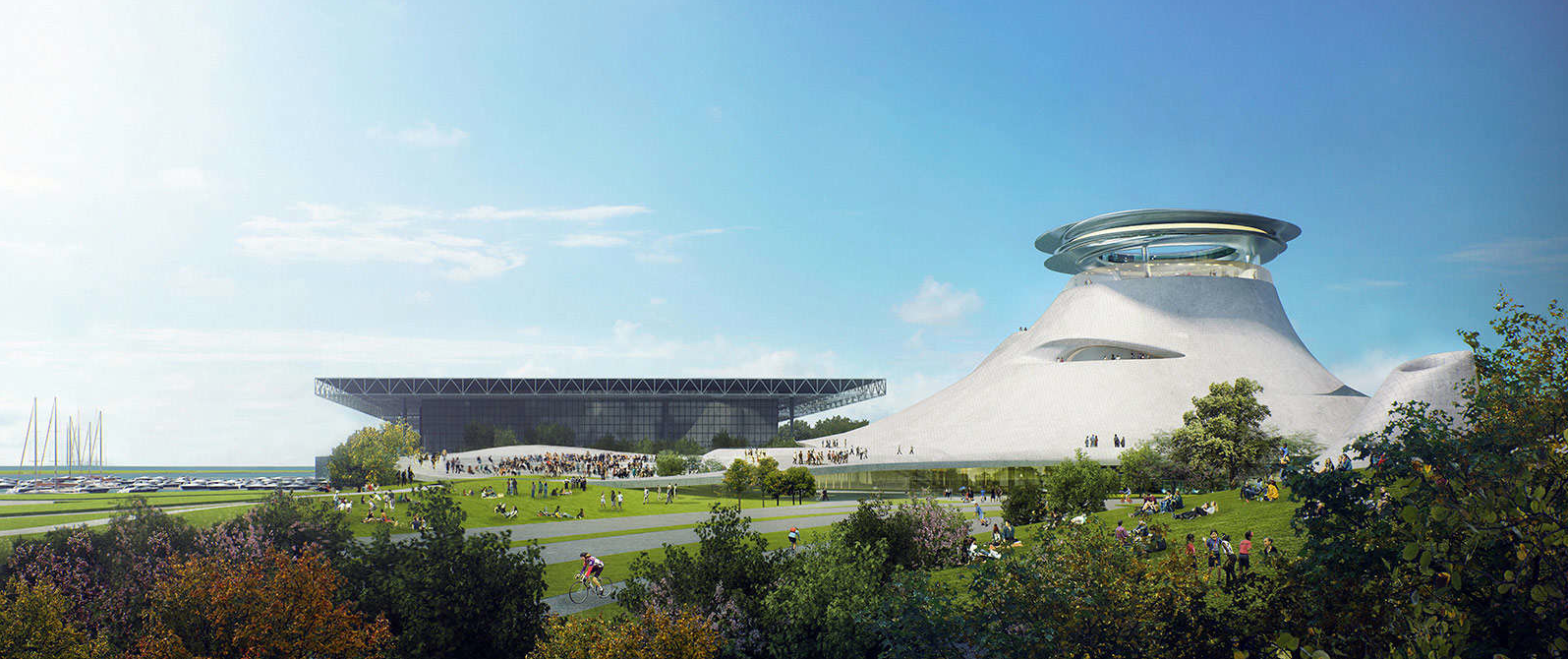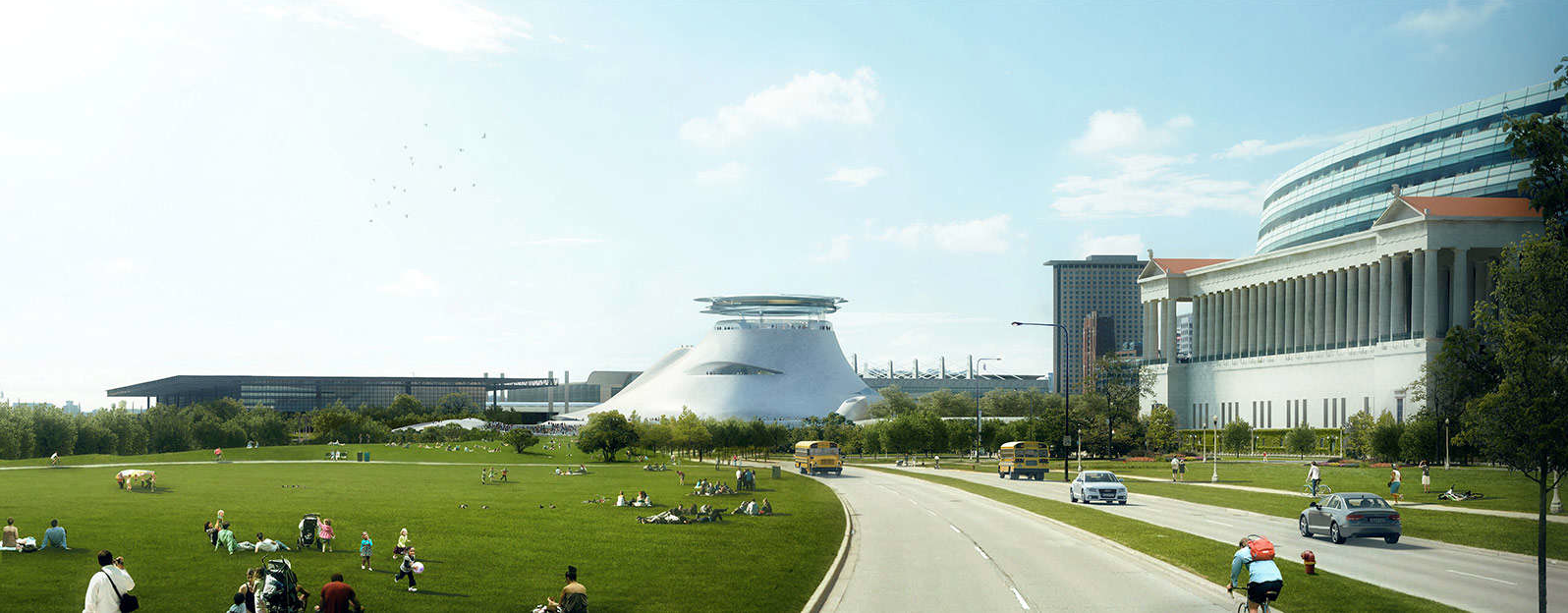Georges Lucas has a big, big project and it's called The Lucas Museum of Narrative Art. Located at Chicago - instead than San Francisco where it was first envisioned - it will be a gathering place to experience narrative art and the evolution of moving images – from illustration to cinema to the digital mediums of the future.
What are "Narrative Arts"? Narrative Art tells a story. It uses the power of the visual image to ignite imaginations, evoke emotions and capture universal cultural truths and aspirations. What distinguishes Narrative Art from other genres is its ability to narrate a story across diverse cultures, preserving it for future generations. As there is different forms of narrative arts the museum will have different sections, one for illustrations, children's art, comic art, photography, pin-up art... another one for the Art of Cinema will present Cinematic Design, Set Design, Prop Design, Costume and Fashion Design, Makeup and Creature Design, Animation or Visual Effects. Another section will talk bout digital arts with focus on Digital Cinema, Digital Illustration, Digital Fine Art, Digital Sculpture and digital architecture.
Talking about architecture, the architectural concept for the Lucas Museum of Narrative Art will explore the relationship between nature and the urban environment. Inspired by the work of Frank Lloyd Wright and Mies van der Rohe, the design integrates the natural beauty of the park and Lake Michigan with the powerful man-made architecture of Chicago. The design furthers the Museum’s mission to be a place of education, culture, and inspiration.
The Lucas Museum design is both futuristic and timeless. Its continuous, undulating organic surface blurs the line between structure and landscape. As the harbor rises up to the land, it merges with stone surfaces that reach up to the sky and ultimately crescendo into a “floating” disc. The Museum is not an isolated object, but a spatial experience that is defined by the people who occupy it and interact with it. Its organic surface is made of a single material, a stone as primitive as it is futuristic, evoking the great achievements of architectural history. It is a place to discover and explore, to communicate and contemplate. More than a building, it is an urban vista for social interaction, bringing people closer to each other and to nature.
South View
Rising up from the land and crescendoing to a “floating” disc, the tallest points of the Lucas Museum will feature an observation deck, providing visitors with stunning views of both Chicago and Lake Michigan.
North View
Earth, stone and sky merge seamlessly in the innovative design of the Lucas Museum.
The tallest points of the Lucas Museum will feature an observation deck with 360-degree views, providing visitors with stunning panoramas of both Chicago and Lake Michigan. Inside, four levels of exhibition space in infinite loops will inspire the imagination to ponder endless possibilities, both in content and design.
The design for the Lucas Museum mirrors the objective of the artwork inside: It tells a story. The narrative ushers in the future of architectural design, exploring the relationship between man and nature. Its iconic design aspires to join the ranks of Chicago’s many cherished landmarks.
Wide-Angle View
Situated between McCormick Place and Soldier Field, the Lucas Museum of Narrative Art will expand public access to green space on Burnham Harbor.
To keep the community up to date, The Lucas Museum website will feature a live web-cam as well as time-lapse photography to showcase the progression of the building's design.
With its architecture looking like Space Mountain over which would float an alien mother spaceship, i instantly loved it! If you want to learn more about the architecture watch the video below in which architect Ma Yansong shares his vision. And to learn more about The Lucas Museum of Narrative Art, jump HERE.
All pictures: copyright The Lucas Museum of Narrative Art







No comments:
Post a Comment